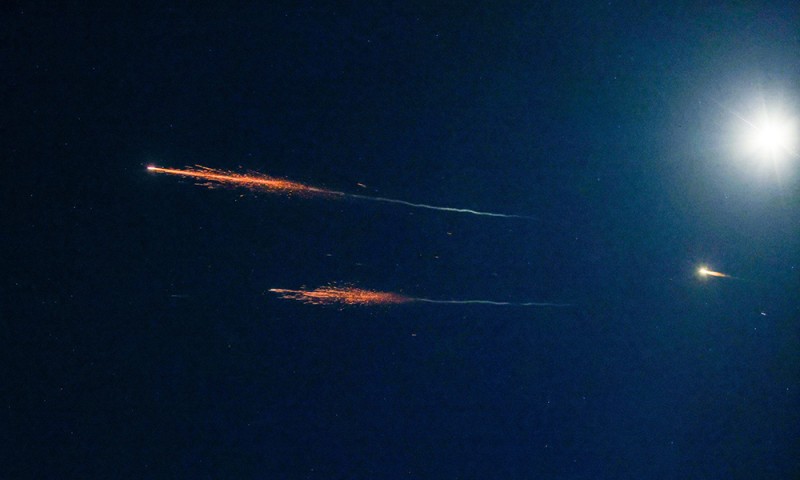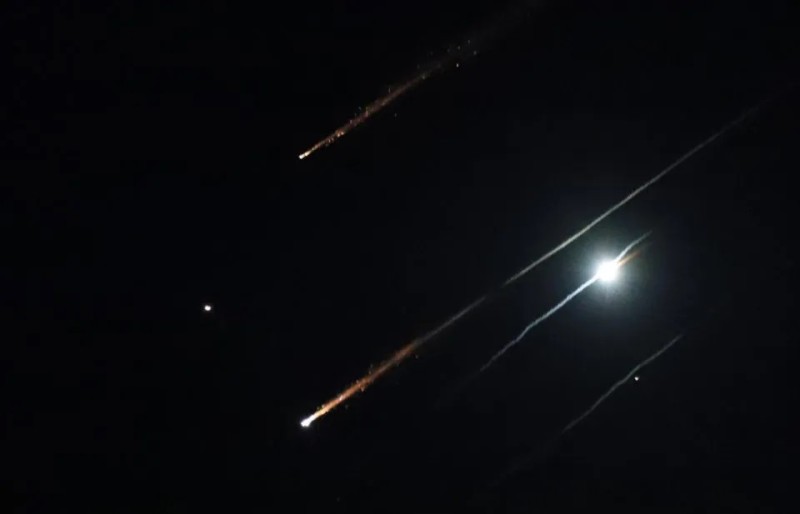
• 作为对以色列大规模空袭的回应,伊朗已向以方发射数百枚导弹,但数量未达预期。与此同时,以色列已针对伊朗导弹及其发射能力展开打击。战争研究所(Institute for the Study of War)指出,伊朗的攻击频次相较于初期密集轰炸阶段已有所放缓。
随着双方似乎都在扩大打击目标范围(包括能源基础设施),以伊冲突在上周末进一步升级。
然而,尽管以色列发动猛烈空袭,甚至有迹象表明其目标直指伊朗政权,伊朗却并未以同等规模回击——导弹发射量低于预期且频次持续下降。
战争研究所指出,这是因为以色列已将伊朗的导弹储备及其发射能力作为打击目标。
战争研究所研究人员在上周日发布的一份评估报告中写道:“自6月12日以色列发动空袭以来,伊朗针对以色列的导弹袭击频次已有所下降,这表明以色列的打击行动正对伊朗向以色列发射导弹的速率产生影响。”
据该研究所估算,上周五至周六期间,伊朗发起了六轮攻击,动用了100至200枚导弹。但自上周六起,伊朗仅发动两轮攻击,每轮使用35至40枚导弹。
按战争研究所估算的上限来看,初期每轮平均约33枚导弹,而后续每轮平均仅20枚。
上周六,战争研究所对以伊冲突的分析指出,据报道伊朗原计划向以色列发射1000枚弹道导弹以回应以方袭击,但该研究所当时统计的数据显示,实际发射总量仅为200枚。
战争研究所写道:“伊朗对以色列反击所动用的弹药数量远低于最初计划,原因是以色列国防军摧毁并破坏了伊朗原计划用于报复以色列的导弹发射架和发射井。”
根据战争研究所的数据,在当前冲突爆发前,美国和以色列估算伊朗的导弹库存量约为2000枚,不过并非所有导弹都具备抵达以色列的射程。
若这一预估数字无误,那么伊朗目前针对以色列的导弹发射速率或许难以长久维持。

诚然,伊朗造成了重大损失并致人员伤亡,但以色列的“铁穹”导弹防御系统成功拦截诸多袭击,限制了伊朗报复行动的成效。
其他分析人士此前曾指出,伊朗可行的军事选项有限,其整体能力已被以色列严重削弱。
这可能迫使伊朗寻求不依赖导弹发射的报复方式。上周六,一名伊朗议员称,封锁霍尔木兹海峡这一全球能源贸易的关键咽喉要道正在认真考虑之中。该海峡每日输送的石油量约占全球石油液体消费量的21%,约为2100万桶。
与此同时,以色列持续推进空袭行动,并将打击目标拓展至伊朗能源基础设施。在消灭伊朗大部分高级军事领导层,并对核设施和军事设施进行猛烈轰炸之后,以色列又对燃料供应设施以及素有全球最大天然气田之称的南帕尔斯气田发起袭击。
根据战争研究所的数据,帕尔斯气田对伊朗国内能源生产至关重要,伊朗90%以上的电力由燃气电厂供应。
“伊朗天然气生产中断可能会加剧该国持续的能源危机,进而引发更广泛的电力中断,”战争研究所上周日指出。“此前伊朗民众曾因能源短缺而对政权发起抗议。2017年和2018年天然气价格上涨引发的示威活动升级为对政权稳定的更广泛挑战。”(*)
译者:中慧言-王芳
• 作为对以色列大规模空袭的回应,伊朗已向以方发射数百枚导弹,但数量未达预期。与此同时,以色列已针对伊朗导弹及其发射能力展开打击。战争研究所(Institute for the Study of War)指出,伊朗的攻击频次相较于初期密集轰炸阶段已有所放缓。
随着双方似乎都在扩大打击目标范围(包括能源基础设施),以伊冲突在上周末进一步升级。
然而,尽管以色列发动猛烈空袭,甚至有迹象表明其目标直指伊朗政权,伊朗却并未以同等规模回击——导弹发射量低于预期且频次持续下降。
战争研究所指出,这是因为以色列已将伊朗的导弹储备及其发射能力作为打击目标。
战争研究所研究人员在上周日发布的一份评估报告中写道:“自6月12日以色列发动空袭以来,伊朗针对以色列的导弹袭击频次已有所下降,这表明以色列的打击行动正对伊朗向以色列发射导弹的速率产生影响。”
据该研究所估算,上周五至周六期间,伊朗发起了六轮攻击,动用了100至200枚导弹。但自上周六起,伊朗仅发动两轮攻击,每轮使用35至40枚导弹。
按战争研究所估算的上限来看,初期每轮平均约33枚导弹,而后续每轮平均仅20枚。
上周六,战争研究所对以伊冲突的分析指出,据报道伊朗原计划向以色列发射1000枚弹道导弹以回应以方袭击,但该研究所当时统计的数据显示,实际发射总量仅为200枚。
战争研究所写道:“伊朗对以色列反击所动用的弹药数量远低于最初计划,原因是以色列国防军摧毁并破坏了伊朗原计划用于报复以色列的导弹发射架和发射井。”
根据战争研究所的数据,在当前冲突爆发前,美国和以色列估算伊朗的导弹库存量约为2000枚,不过并非所有导弹都具备抵达以色列的射程。
若这一预估数字无误,那么伊朗目前针对以色列的导弹发射速率或许难以长久维持。
诚然,伊朗造成了重大损失并致人员伤亡,但以色列的“铁穹”导弹防御系统成功拦截诸多袭击,限制了伊朗报复行动的成效。
其他分析人士此前曾指出,伊朗可行的军事选项有限,其整体能力已被以色列严重削弱。
这可能迫使伊朗寻求不依赖导弹发射的报复方式。上周六,一名伊朗议员称,封锁霍尔木兹海峡这一全球能源贸易的关键咽喉要道正在认真考虑之中。该海峡每日输送的石油量约占全球石油液体消费量的21%,约为2100万桶。
与此同时,以色列持续推进空袭行动,并将打击目标拓展至伊朗能源基础设施。在消灭伊朗大部分高级军事领导层,并对核设施和军事设施进行猛烈轰炸之后,以色列又对燃料供应设施以及素有全球最大天然气田之称的南帕尔斯气田发起袭击。
根据战争研究所的数据,帕尔斯气田对伊朗国内能源生产至关重要,伊朗90%以上的电力由燃气电厂供应。
“伊朗天然气生产中断可能会加剧该国持续的能源危机,进而引发更广泛的电力中断,”战争研究所上周日指出。“此前伊朗民众曾因能源短缺而对政权发起抗议。2017年和2018年天然气价格上涨引发的示威活动升级为对政权稳定的更广泛挑战。”(*)
译者:中慧言-王芳
• Iran has launched hundreds of missiles at Israel in response to its expansive air strikes, though not as many as expected. Meanwhile, Israel has targeted Iran’s missiles as well as its ability to launch them. The Institute for the Study of War said Iran’s rate of attack is already slowing down from its initial barrages.
The conflict between Israel and Iran escalated over the weekend as both sides appeared to expand their range of targets, including energy infrastructure.
But despite Israel’s aggressive air strikes and even suggestions that they are aimed at the regime itself, Iran has not responded in kind, launching fewer missiles than expected and at a declining rate.
That’s because Israel has targeted Iran’s stockpile of missiles as well as its ability to launch them, according to the Institute for the Study of War.
“The frequency of Iran’s missile barrages targeting Israel has decreased since the start of the Israeli air campaign on June 12, which suggests that Israeli strikes are impacting the rate at which Iran can launch missiles at Israel,” ISW researchers wrote in an assessment on Sunday.
On Friday and Saturday, Iran conducted six waves of attacks using 100-200 missiles, ISW estimated. But since Saturday, Iran has only conducted two waves of attacks using 35-40 missiles each.
Using the high end of each ISW estimate, that means the initial waves averaged about 33 missiles each, while the subsequent waves have averaged 20 missiles.
On Saturday, ISW’s analysis of the Israel-Iran conflict noted that Tehran had reportedly planned to launch 1,000 ballistic missiles at Israel in response to Israeli attacks. But ISW’s tally at the time put the total at just 200.
“Iran has used significantly fewer munitions in its response to Israel than originally planned because the IDF destroyed and damaged missile launchers and silos that Iran planned to use to retaliate against Israel,” ISW wrote.
Before the current conflict started, U.S. and Israeli estimates put Iran’s stockpile of missiles at about 2,000, but not all of them have enough range to reach Israel, according to ISW.
If that number is accurate, then Iran’s current rate of missile launches at Israel may not be sustainable for much longer.
To be sure, Iran has inflicted significant damage and caused fatalities, but Israel’s Iron Dome missile-defense system has been intercepting many attacks, limiting the effectiveness of Iran’s retaliation.
Other analysts have previously noted that Iran has few viable military options, and its overall capabilities have been severely degraded by Israel.
That could force Tehran to look for ways to retaliate in ways that don’t involve launching missiles. An Iranian lawmaker said Saturday that the closure of the Strait of Hormuz, a critical chokepoint in the global energy trade, was under serious consideration. The equivalent of 21% of global petroleum liquids consumption, or about 21 million barrels per day, flows through the strait.
Meanwhile, Israel is continuing its own barrage and expanding its targets to include Iran’s energy infrastructure. After wiping out much of Tehran’s top military leadership as well as pummeling nuclear and military facilities, Israel has hit fuel supplies and the Pars South gas field, considered to the world’s largest reservoir of natural gas.
The Pars field is critical to Iran’s domestic energy production, and more than 90% of Iran’s electricity is generated by gas-powered plants, according to ISW.
“Disruptions to Iran’s natural gas production will likely worsen the country’s ongoing energy crisis and lead to more widespread electricity blackouts, however,” ISW said on Sunday. “Iranians have previously protested against the regime in response to energy shortages. Demonstrations over the rising gas prices in 2017 and 2018 escalated into broader challenges for the regime’s stability.”

